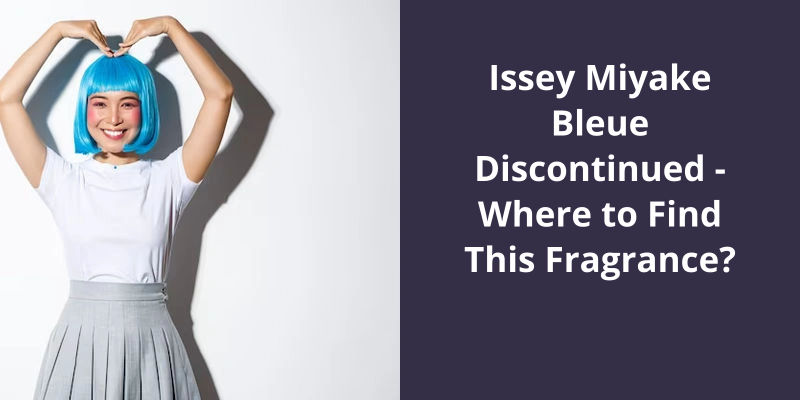Grey Market Fragrances are authentic perfumes that are sold through unofficial, unauthorized channels, not endorsed by the original manufacturers. These fragrances might be sourced from different countries where they are priced lower due to currency difference or varying distribution costs and then resold in other markets for a profit. They are considered legal, although the quality and storage conditions might vary. Issues may arise post-purchase, for instance, if the bottle is defective or the fragrance is off, you might not get the same level of support as from an authorized retailer.

Is FragranceNet Grey Market?
FragranceNet is a widely recognized online retailer in the perfume industry, offering an extensive range of fragrance products at incredibly low prices. However, there have been discussions and speculations regarding the origins of some of their products, particularly whether they’re sourced from the gray market. The gray market refers to a market where products are legally sold through unauthorized channels. These channels may include distributors, retailers, or individuals who aren’t part of the official supply chain of a particular brand.
However, it’s essential to note that purchasing gray market fragrances does come with certain risks. Since these products haven’t followed the official distribution channels of a brand, there’s a possibility of tampering, counterfeit goods, or expired products. Many luxury perfume brands have strict control over their distribution networks to maintain product quality and protect their brand image.
The opportunity to access authentic products at significantly discounted prices is often too tempting for fragrance enthusiasts to resist. However, it’s crucial to ensure that customers remain vigilant and verify the authenticity and freshness of the products they purchase, especially when dealing with online retailers.
The Dangers of Purchasing Counterfeit Perfume From Gray Market Sources.
When it comes to purchasing fragrances, it’s essential to be cautious of gray market sources. Gray market fragrances refer to products that are sold through unauthorized sellers or channels. These sellers may not have the proper authorization or permission from the brand to sell their products.
One of the biggest dangers of buying counterfeit perfume from gray market sources is the risk of purchasing a fake or counterfeit product. Counterfeit perfumes are often made using low-quality or harmful ingredients, which can lead to skin irritations, allergies, or other health issues. Moreover, counterfeit fragrances rarely capture the true scent and quality of the original perfume, resulting in a disappointing purchase.
In addition to the potential health risks, purchasing gray market fragrances also undermines the integrity of the perfume industry. Genuine perfume brands invest a great deal of time, effort, and resources into creating unique and high-quality scents. Buying counterfeit perfumes not only harms reputable brands, but it also supports illegal and unethical practices.
To ensure that you’re purchasing authentic and safe fragrances, it’s best to buy from authorized retailers or directly from the brand’s official stores. These sources guarantee the authenticity of the products and provide customer support if any issues occur. It’s always better to prioritize quality and safety over potentially cheaper but risky gray market options.
Watch this video on YouTube:
Gray market goods are known for being genuine branded products that have been brought into the United States by a third-party, without the consent of the trademark owner. These goods are typically sold at a lower price compared to the official U.S. versions.
What Are the Characteristics of a Gray Market?
The gray market is a complex phenomenon that affects various industries, including the perfume industry. It’s characterized by the unauthorized importation and sale of genuine branded goods from one country to another, often resulting in a price discrepancy between the original product and the gray market version. Gray market fragrances, for example, are genuine perfumes that are initially sold by the trademark owner in another country and subsequently imported to the U.S. without the owners consent.
Another characteristic of the gray market is the lack of control from the trademark owner, who didn’t authorize the importation or sale of their products in the specific market. This lack of control can lead to market disruption and potential damage to the brands reputation.
Legal Implications: Discuss the Legal Considerations Involved in the Gray Market, Such as Trademark Infringement, Parallel Imports, and the Challenges of Enforcing Intellectual Property Rights Across International Borders.
The gray market in the perfume industry brings about various legal implications that revolve around trademark infringement, parallel imports, and the enforcement of intellectual property rights across international borders.
Trademark infringement arises when gray market fragrances are sold without proper authorization from the original brand owners. This can deceive consumers and damage the reputation of the brand.
Parallel imports occur when legitimate products are sold in unauthorized markets without the brand owner’s consent. This undermines market control and pricing strategies set by the brand.
Enforcement of intellectual property rights becomes complex in the gray market due to the challenges posed by international borders. Different jurisdictions have varying laws, making it difficult to effectively tackle counterfeiting and unauthorized distribution.
Addressing these legal considerations is crucial to protect brand integrity, maintain market control, and ensure consumer safety in the gray market fragrance trade.
However, it’s important to consider the potential risks and drawbacks before making a purchase. Gray market products may lack manufacturer warranties or support, leaving customers with no recourse if something goes wrong.
Is It Okay to Buy From Grey Market?
Is it okay to buy from grey market? While grey market products may initially appear to be a wonderful deal, it’s important to resist the temptation and think twice before making a purchase. These products, which include various items such as electronics, luxury goods, and yes, even fragrances, may end up costing you more than you anticipated in the long run.
One of the major drawbacks of purchasing from the grey market is that these products aren’t covered by manufacturer warranties or support. This means that if the item malfunctions or breaks, customers have no recourse for repair or replacement. This lack of support can be a significant risk, as it essentially leaves consumers with a potentially expensive and unusable product.
Furthermore, grey market products often lack the quality control and authenticity guarantees that come with purchasing directly from authorized retailers. In the fragrance industry specifically, this means that the scent you receive may not be the genuine product, and you may unknowingly end up with a counterfeit or diluted version of the fragrance.
Risks and Consequences of Buying Counterfeit Products From the Grey Market
The grey market refers to the unauthorized sale of products outside of the manufacturer’s intended distribution channels. When it comes to fragrances, buying counterfeit or fake perfumes from the grey market can have several risks and consequences. Firstly, the quality of these counterfeit products is often compromised, resulting in an inferior fragrance experience. Additionally, counterfeit perfumes may contain harmful ingredients that can cause skin irritation or other adverse reactions. Furthermore, purchasing counterfeit fragrances supports illegal activities and undermines the perfume industry, leading to financial losses for legitimate manufacturers and retailers. Therefore, it’s crucial to exercise caution and buy fragrances only from authorized and reputable sources to ensure authenticity and enjoy a safe and genuine fragrance experience.
Source: Questions about gray market
As consumers search for better deals and discounts, grey marketing has emerged as a lucrative practice. This type of arbitrage involves purchasing goods in markets where prices are comparatively lower and reselling them in markets where prices are higher. Grey marketers thrive on the substantial price differentials, as they capitalize on the opportunity to generate higher profits. Now, let’s delve into the key features associated with grey marketing.
What Are the Features of GREY Marketing?
Grey marketing, also known as parallel import or parallel trade, is a strategy employed by individuals or companies to exploit price differentials between different markets. It involves purchasing goods in regions or countries where prices are relatively lower and subsequently reselling them in markets where prices are significantly higher. This practice is essentially a form of arbitrage, where grey marketers capitalize on the disparity in prices to generate profits.
One of the defining features of grey marketing is the ability to identify and take advantage of variations in pricing across various markets. These individuals or entities may utilize a range of strategies, such as bulk purchasing or sourcing from authorized distributors, to secure these products at reduced costs.
The profitability of grey marketing is directly correlated with the extent of price differentials between markets. The greater the difference in prices, the higher the potential for profits. This often occurs due to factors such as currency exchange rates, taxes, and import/export restrictions, which create disparities in pricing for the same product.
It undermines their ability to control pricing and distribution, disrupting their carefully crafted marketing strategies. Consequently, companies may resort to implementing measures such as regional pricing or stringent distribution agreements to counteract grey market activities.
This practice disrupts authorized distribution channels and challenges manufacturers control over pricing and distribution.
Examples of Grey Market Products: This Topic Could Explore the Different Types of Products That Are Commonly Involved in Grey Market Activities, Such as Electronics, Luxury Goods, Pharmaceuticals, and Automotive Parts.
Grey market fragrances refer to perfumes that are sold in channels that aren’t authorized by the brand or manufacturer. These channels may include unauthorized retailers, online marketplaces, or even individuals selling through social media platforms. Grey market fragrances are often priced lower than those sold through authorized channels, making them attractive to price-conscious buyers. However, there are risks associated with purchasing grey market fragrances, such as counterfeit products, expired or tampered items, and lack of manufacturer warranties or customer support. Therefore, it’s important for consumers to be cautious when buying fragrances from grey market sources and to verify the authenticity and quality of the product.
Grey market refers to the trading of goods or commodities through channels that aren’t authorized by the manufacturer or the official markets. There are three main types of grey market activities. The first type involves the importation and sale of manufactured goods that are either unavailable or unreasonably expensive in the host country. The second type is related to unissued securities that aren’t yet traded in the official markets. And finally, grey market also encompasses unregulated trading in commodity futures, such as crude oil. These three types of grey market activities play a significant role in the global trade landscape, often providing consumers with access to products and opportunities that would otherwise be limited or restricted.
What Are the Three Type of Grey Market?
Grey market refers to the trade and distribution of goods and securities outside the official authorized channels. In the perfume industry, grey market fragrances have become a significant concern for both consumers and manufacturers. These fragrances are often imported from different countries and sold at lower prices than what the authorized retailers offer. However, understanding the three main types of grey market can shed light on this secretive aspect of the perfume industry.
Lastly, the third type of grey market involves unregulated trading in commodity futures. Commodities such as crude oil are traded outside the official commodity exchanges, leading to concerns about price manipulation and lack of market oversight.
The Impact of Grey Market on the Perfume Industry
Grey market fragrances refer to the sale of authentic perfumes through unofficial channels, typically at a lower price than the products available through authorized retailers. These products are often acquired through unauthorized distributors or parallel importers. While this may seem like a win for consumers, as they can purchase high-end perfumes at a discounted price, it’s significant implications for the perfume industry.
The grey market undermines the business of authorised retailers and the brands themselves. It creates a competition that’s difficult to control and affects the brand image, profitability, and market positioning of perfume companies. Brands invest significant resources in marketing, quality control, and distribution. However, the grey market disrupts this system by offering products outside the established distribution channels.
Furthermore, the grey market can negatively impact customer experience. These products may be stored or transported improperly, affecting their quality or even leading to counterfeits. Additionally, gray market fragrances may lack proper warranties or customer support, leaving buyers at a disadvantage if problems arise.
To combat the impact of grey market fragrances, perfumers and retailers are implementing measures such as online price monitoring, enhanced packaging to prevent tampering, and stricter distribution controls. By understanding the implications of the grey market, consumers can make more informed choices and support the authorized distribution channels, ensuring the longevity and success of the perfume industry.
Conclusion
These fragrances may lack official distribution channels, making them more affordable for consumers, but they come with certain risks and uncertainties. Consumers should be aware of the potential quality variations, expiration dates, and lack of official warranty or customer support when purchasing from the grey market. Furthermore, the grey market poses challenges for brand owners who strive to maintain control over their products and protect their image and reputation.





